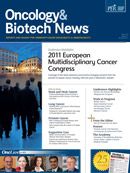Better Communication of Complex Medical Information Needed
Researchers are urging oncologists to improve the communication of complex medical information to their patients.

Angela Fagerlin, PhD
Researchers are urging oncologists to improve the communication of complex medical information to their patients.
Angela Fagerlin, PhD, with the University of Michigan and the VA Ann Arbor Center for Clinical Management Research, and colleagues cited 10 recommendations “that have shown strong evidence for improved patient understanding and decision making.”
Their methods, they said, are tailored to patients who need to make a decision that involves trade-offs (eg, between quality and length of life or between different aspects of quality of life), in which the right choice depends on how important the patient finds these trade-offs.
The team issued its recommendations because of concern that while patients are increasingly being required to make difficult decisions about cancer screening, prevention, and treatment, they are frequently not able to understand the types of health information needed to make such decisions.
Patients may, for example, lack the “health literacy” required to understand what their physician is saying to them, and they may also be unable to understand the educational materials issued by their healthcare providers. Low numeracy skills may also be a problem, meaning that patients may not be able to use numerical information discussed in educational materials (eg, risk and benefit statistics) in order to make informed decisions.
Fagerlin and associates said that the use of plain language is a must for cancer education. In short, materials should be written so that they can be understood by people with an eighth grade or lower level of education, and the use of clinical and statistical jargon should be avoided. Instead, the authors propose the use of focused information presented in a logical order coupled with a graphic design or page design involving subheadings and the use of more white space intended to make the document more readable.

They also advise oncologists to present statistical information using absolute risk instead of relative risk or number-needed-to-treat formats. In support of this recommendation, they point to evidence showing that “both in the context of making psychological and medical decisions…changes in risk appear larger when presented using relative risk than when using an absolute risk and that the treatments were viewed more favorably when presented in terms of relative risk.” The use of relative risk information may convince patients that a treatment is more effective than has been empirically demonstrated.
Additional strategies include the use of an incremental risk format to highlight how treatment changes the risk from preexisting baseline levels, along with the use of summary tables that include all of the risks and benefits for each treatment option.
Clinicians should also be aware that the order in which risks and benefits are presented can affect perceptions.
Fagerlin A, BJ Zikmund-Fisher, Ubel PA. Helping patients decide: ten steps to better risk communication. J Natl Cancer Inst. 2011;103:1-8.




